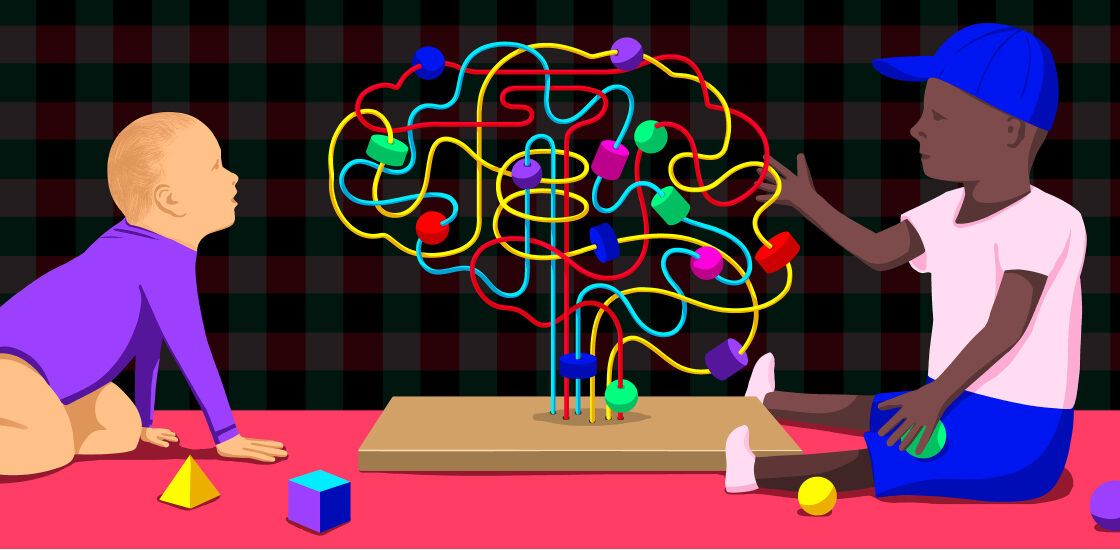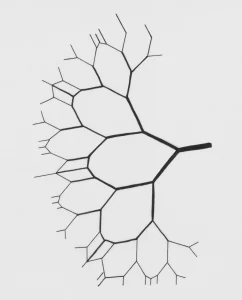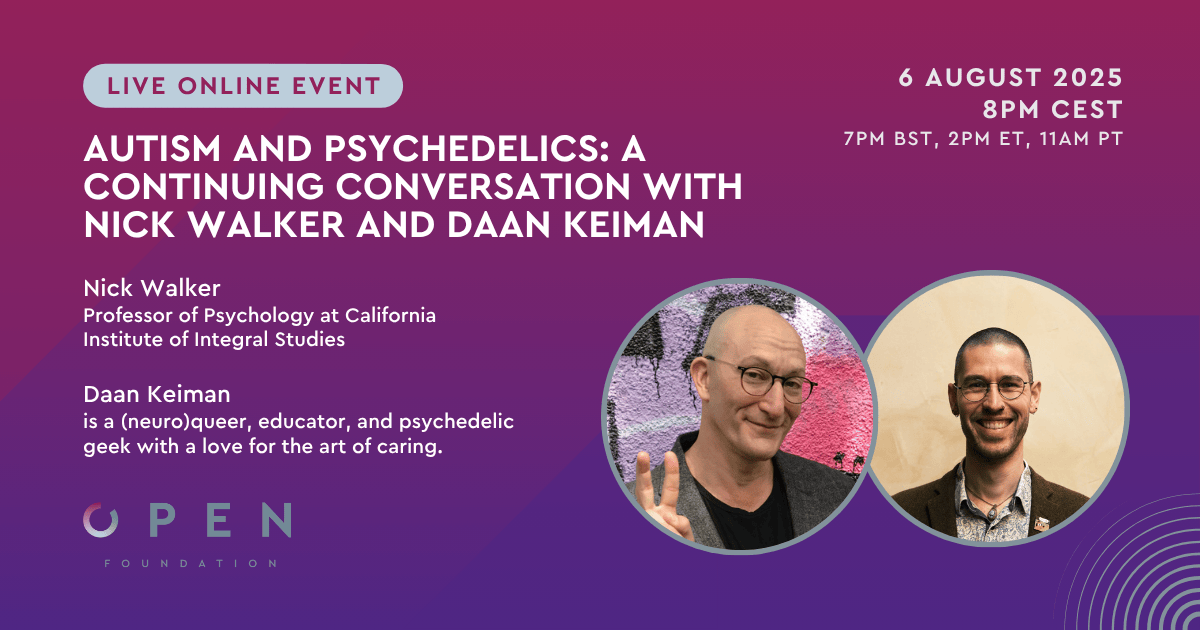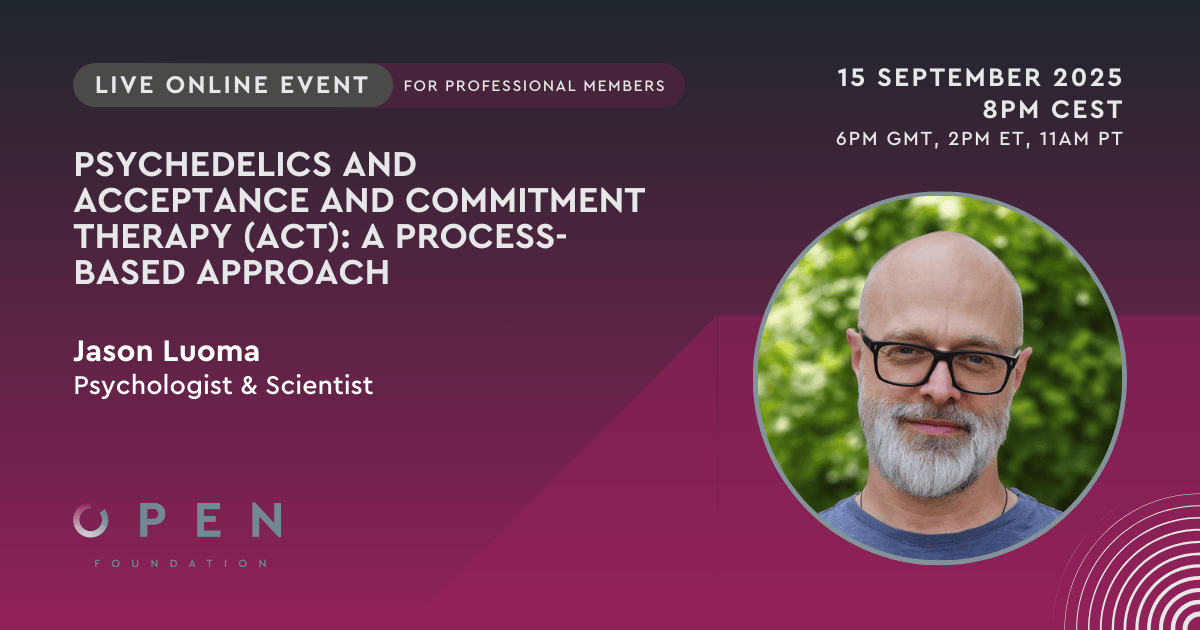In the early sixties, a number of controversial clinical investigations were published involving the administration of LSD-25 (lysergic acid diethylamide) to young children said to suffer from severe forms of autism, or childhood-onset schizophrenia (COS), which were then regarded as closely related [1]. The reason for conducting the studies with young children was the supposed similarity between autism and COS. Prompted by the apparent results of studies conducted with LSD-25 and adult mute catatonic patients by Cholden, Kurland, and Savage (1955), hypotheses were constructed to research a possible therapeutic utility. “The goal in these therapeutic efforts”, said Bender in an article published in Recent Advances in Biological Psychiatry (1962), “has been to modify the secondary symptomatology associated with retarded, regressed, and disturbed behavior of the children”. The larger part of the children treated with LSD in these studies were between six and ten years old and completely unresponsive to all other forms of treatment. That the children couldn’t be treated by other means served, in part, for the justification for using a powerful psychoactive substance in child experiments. Surely this decision would have been criticized by the ethical commission today.
A pharmacological intervention by means of LSD was said to “nudge the lagging maturation” (Bender, 1962) into a (somewhat) normal developmental pattern. How exactly the administration of LSD would accomplish the “freeing of the most imprisoned minds” was still unknown (Mogar & Aldrich, 1969). LSD was supposed to achieve success through “breaking through the autistic defense” (Bender, 1963), and in this way be exceptionally helpful in “areas which are closely related to the process of psychotherapy” (Simmons et al., 1966). Some believed LSD was especially useful at helping patients to “unblock” repressed subconscious material through other psychotherapeutic methods (Cohen, 1959). Therapists took LSD to establish a connection with the experience of schizophrenia. “During the ‘model psychosis’ phase of LSD research when the psychedelic state was considered a chemically-induced schizophrenia”, says pioneer LSD researcher Stanislav Grof (1980), “LSD sessions were recommended as reversible journeys into the experiential world of psychotics which had a unique didactic significance”.
Some researchers, like Freedman et al. (1963), studied LSD for its supposed psychotomimetic (psychotogenic) properties, meaning that the drug mimics the symptoms of psychosis, including delusions and/or delirium, as opposed to merely hallucinations (Sewell et al., 2009). An exacerbation of ‘typical’ symptoms meant an opportunity for studying the (child)schizophrenic condition. Other researchers (Bender et al., 1963; Rolo, et al., 1965) considered the neurological mechanism behind the effect of LSD, which in that time was still highly obscure, as more important than its role as facilitator of the therapeutic process. For instance, LSD attracted theoretical interest as a serotonin inhibitor and an autonomic nervous system stimulant. Bender et al. (1963) concluded that “LSD-25 given daily in oral doses of 100 mcg [2] to pre-puberty autistic schizophrenic children appears to be an effective autonomic and central nervous system stimulant”, and that these changes “appear to be chronic with continuous administration of the drug”. Continuous administration consisted of daily administration over prolonged periods of time, varying from days to several weeks . The most persistent effects of LSD-25 therapy that were published included improved speech behavior, increased emotional responsiveness, positive mood (laughter) and a decrease of compulsions.
But alas, however interesting and attractive these results seemed to be — the evidence didn’t stick. Today studies into the relationship of LSD and autism aren’t being conducted and the results that were produced are regarded as highly controversial, if not completely repudiated. This was in part because, in retrospect, the studies were greatly flawed. The researchers seemed to have brushed over the conceptual controversy too quickly by choosing “not to deal with the controversial issues concerning the definitions and etiological factors of either childhood schizophrenia (1) or the autistic reaction pattern (2)” (Bender et al., 1962). The debate about the correct place of (childhood) autism within the DSM (Diagnostic and Statistical Manual of Mental Disorders) remains problematic to this day (DSM-V), but autism has long been divorced from the umbrella of schizophrenia. Although both disorders share clinical features, clinical psychologists and psychiatrists regard autism to be a separate diagnostic ‘entity’ from schizophrenia. Because LSD was used as a drug for “intensifying pre-existing symptomology” of schizophrenia (Bender et al., 1962), a conceptual detachment from autism would have disturbed the foundation of the results.
Even if the researchers had chosen to ‘deal with the controversy’, in hindsight, sampling would have still ended up being very problematic. The children treated were demographically varied and covered a broad age range. Conflicting significance is given to the relationship between age and drug response, but Bender noted that “in contrast to pre- adolescents, younger children manifest consistently different reactions” (1962). In contrast, Fisher and Castile concluded that “older children were better candidates for psychedelic therapy because verbal communication was possible and also because they tended to be less withdrawn, more schizophrenic than autistic, and displayed more blatant symptomology” (Mogar & Aldrich, 1969). In addition to age, also the symptoms of treated children were heterogeneous and weren’t corrected for severity. There was no randomization, and most studies suffered from fluctuating frequency of administration and dosage. Lastly, the set and setting of the experiments varied strongly.
Although the studies conducted in the sixties had major flaws from an experimental point of view and therefore didn’t hold up to scientific scrutiny, Mogar and Aldrich argue in an article published in Behavioral Neuropsychiatry (1969) that the results considered as a whole do point to a utility of administering LSD to autistic children. “The significance of seemingly contradictory results”, say Mogar and Aldrich, “has often been obscured by the persistent search for static, ‘drug-specific’ reactions to LSD”. This is an interesting point; despite that the results don’t indicate significance in an experimental sense, there may still be a therapeutic utility. Mogar and Aldrich report that the greatest therapeutic benefit was related to “(a) the degree of active therapist involvement with the patient; (b) an opportunity to experience meaningful objects and interpersonal activities; and (c) congenial settings that were reasonably free of artificiality, experimental or medical restrictions, and mechanically administered procedures” (1969). In practice clinical therapy is usually far removed from theory. It could be that testing LSD, itself being a highly unpredictable drug, in combination with the therapy dynamic is too hard to substantiate. Mogar and Aldrich conclude that “the administration of LSD is inextricably embedded in a larger psychosocial process which should be optimized in accordance with particular treatment goals”.
Considering the recent growth of interest into this area of research, these older and rather obscure studies deserve to be excavated from the psychedelic research literature. Researchers at LA BioMed (Los Angeles Biomedical Research Institute) are now constructing a study which is said to test the already established anecdotal therapeutic relationship between MDMA (3,4-methylenedioxy-N-methylamphetamine) and autism in adults. The study is the latest in an expanding program of research into the therapeutic use of MDMA funded by the nonprofit Multidisciplinary Association for Psychedelic Studies (MAPS). “This new study will give us a chance”, says Charles Grob head researcher at LA BioMed (2014), “to determine the actual effects of differing dosages of medication that we know for certain is pure MDMA on adults on the autism spectrum. If the results of this research warrant further investigation, data from this study will be used to design additional clinical trials”. Now that the limitations for research into the psychedelic experience and its therapeutic effects are being removed and LSD is once again an object of study, these previously published results could serve for the production of new hypotheses.
[1] See (Abramson, 1960; Bender, et al., 1962; Bender, et al., 1963; Fisher & Castile, 1963; Freedman, et al., 1962; Rolo, et al., 1965; Simmons, et al., 1966).
[2] A common psychedelic dosage of LSD ranges from 100 to 200 mcg, a strong dose being 200 to 600 mcg.
References
Abramson, H.A. (Ed.) (1960). The Use of LSD in Psychotherapy. New York: Josiah Macy Foundation.
Bender, L., Faretra, G., & Cobrinik, L. (1963). LSD and UM-L treatment of hospitalized disturbed children. Recent Advances in Biological Psychiatry, 5, 84-92.
Bender, L., Goldschmidt, L., & Sankar, S.D.V. (1962). Treatment of autistic schizophrenic children with LSD-25 and UML-491. Recent Advances in Biological Psychiatry, 4, 170-177.
Cholden, L., Kurland, A., & Savage, C. (1955). Clinical reactions and tolerance to LSD in chronic schizophrenia. Journal of Nervous and Mental Disease, 122, 211-216.
Cohen, S., & Eisner, B. G. (1959). Use of lysergic acid diethylamide in a psychotherapeutic setting. AMA Archives of Neurology & Psychiatry, 81(5), 615-619.
Freedman, A.M., Ebin, E.V., & Wilson, E.A. (1962). Autistic schizophrenic children: An experiment in the use of d-lysergic acid diethylamide (LSD-25). Archives of General Psychiatry, 6, 203-213.
Gettys, T. (2014). MDMA Helps Reduce Social Anxiety for Autistic Adults, and Researchers Want to Find Out How. MAPS. Retrieved at: http://www.maps.org/media/view/mdma_helps_reduce_social_anxiety_for_autistic_adults_and_researchers_w/
Grof, S. (1980). LSD Psychotherapy. California: Hunter House Publishers.
Mogar, E. R., & Aldrich, W. R. (1969). The Use of Psychedelic Agents with Autistic Schizophrenic Children. Behavioral Neuropsychiatry, 1(8), 44-50.
Rolo, A., Krinsky. L.W., Abramson, H.A., & Goldfarb, L. (1965). Preliminary method for study of LSD with children. International Journal of Neuropsychiatry, 1, 552-555.
Sewell, R. A., Ranganathan, M., & D’Souza, D. C. (2009). Cannabinoids and psychosis. International Review of Psychiatry, 21(2), 152-162.
Simmons, J.Q., Leiken, SoJ., Lovaas, Q.I., Schaffer, B., & Perloff, B. (1966). Modification of autistic behavior with LSD-25. The American Journal of Psychiatry, 122, 1201-1211.














